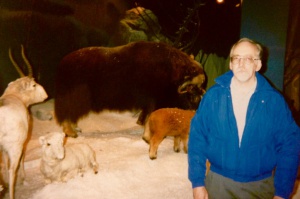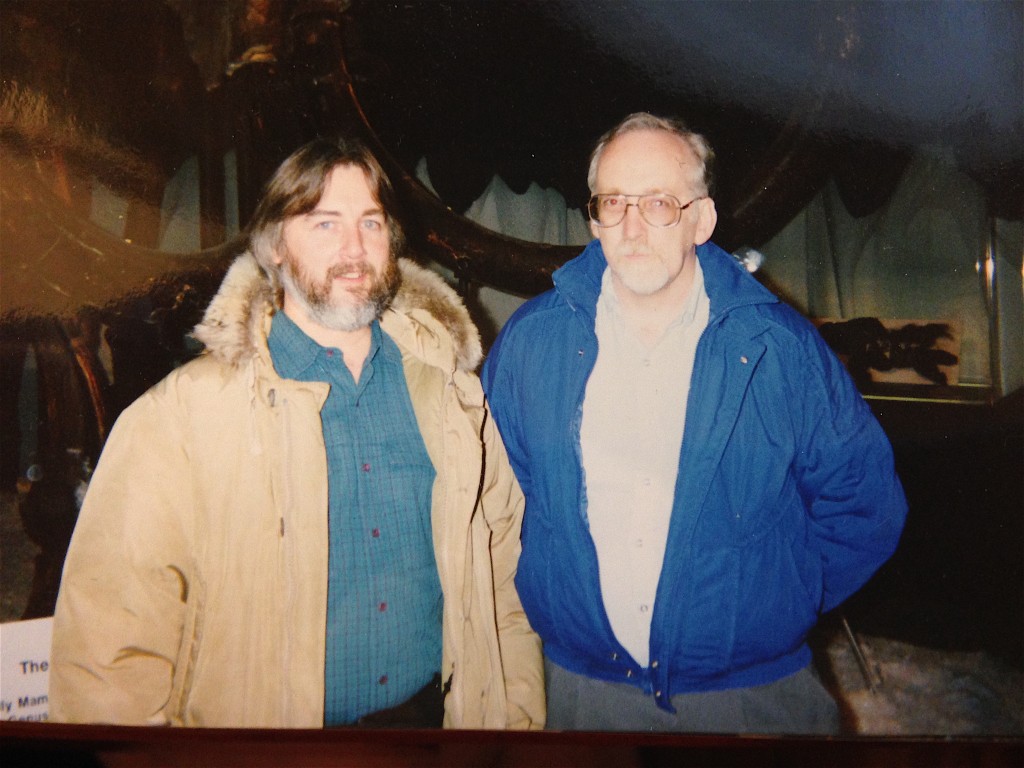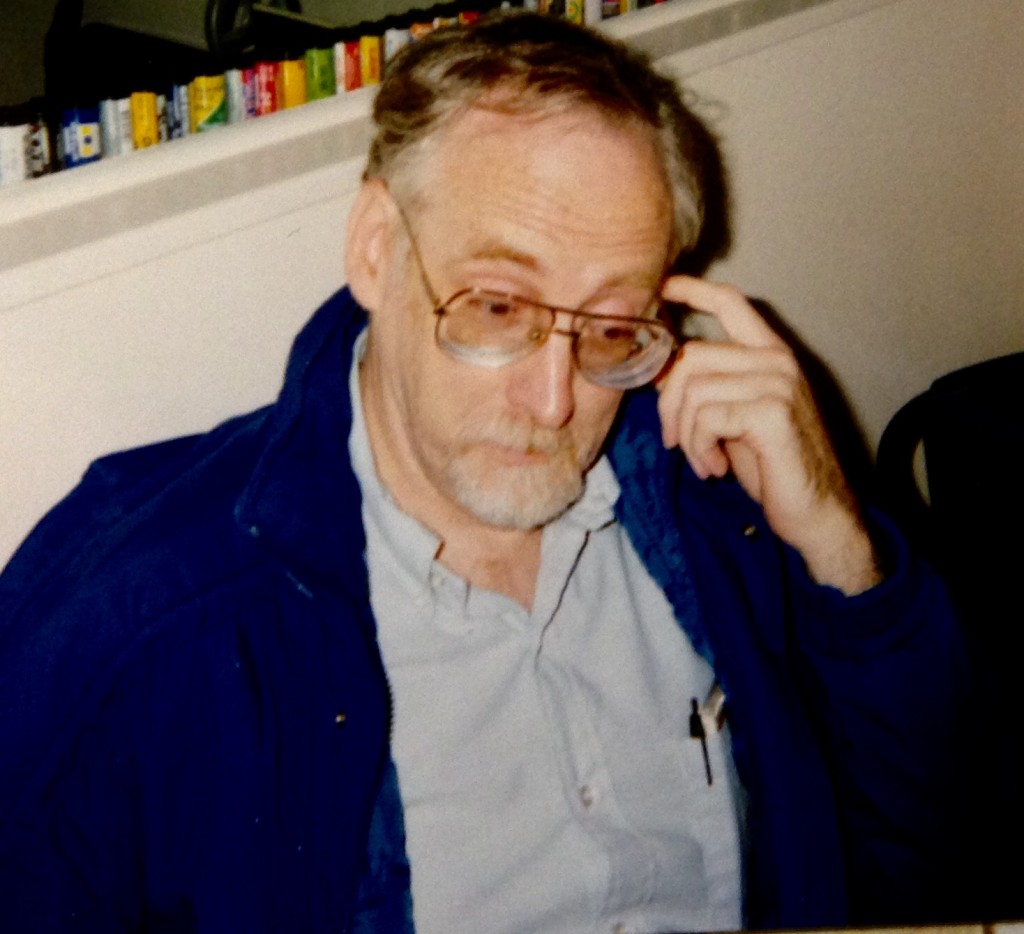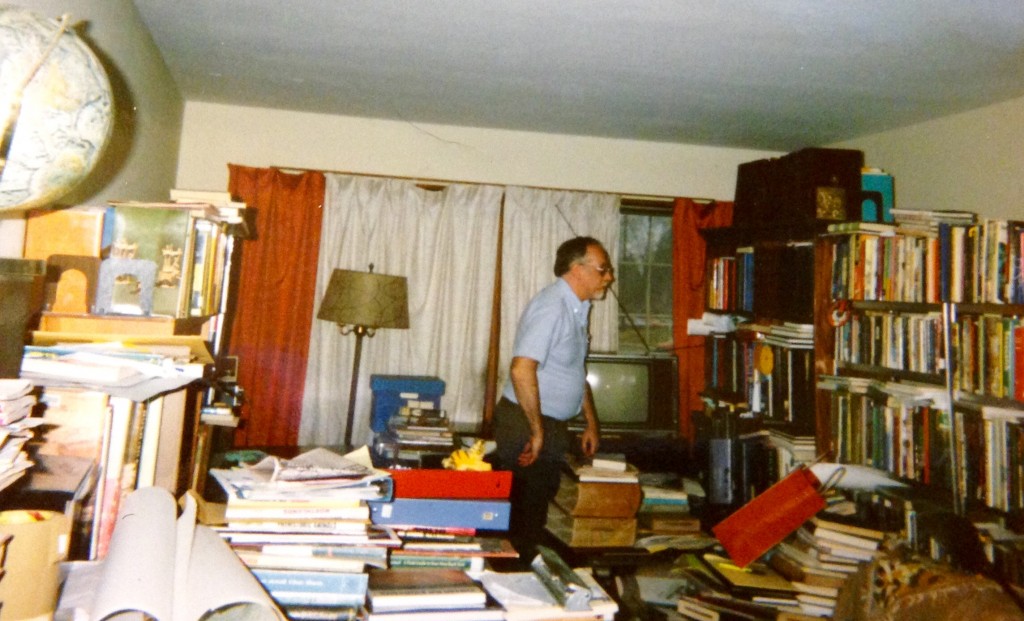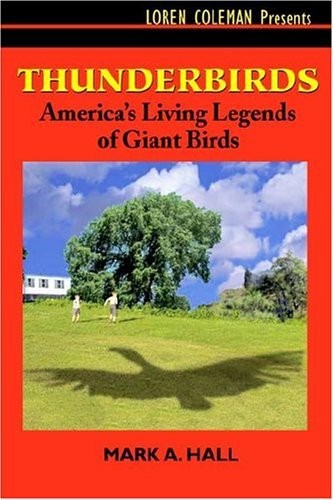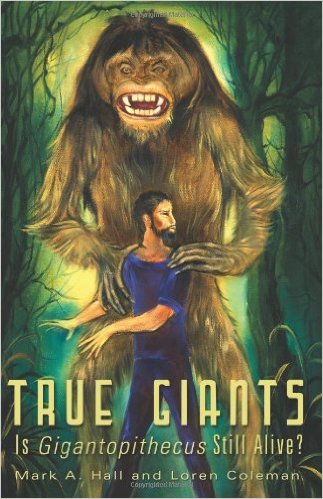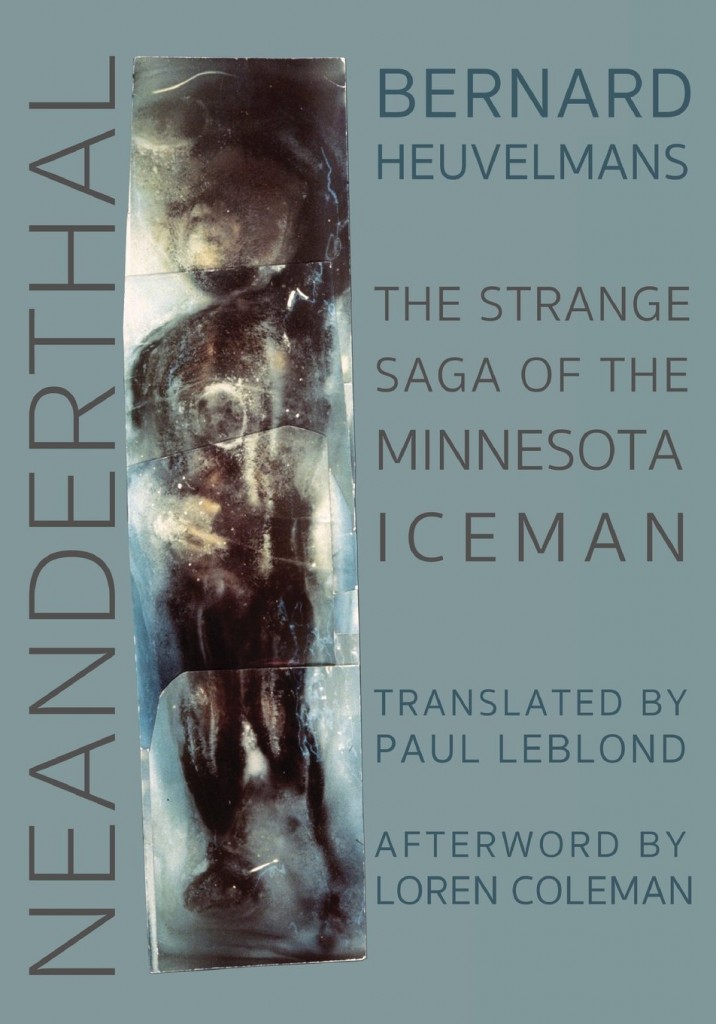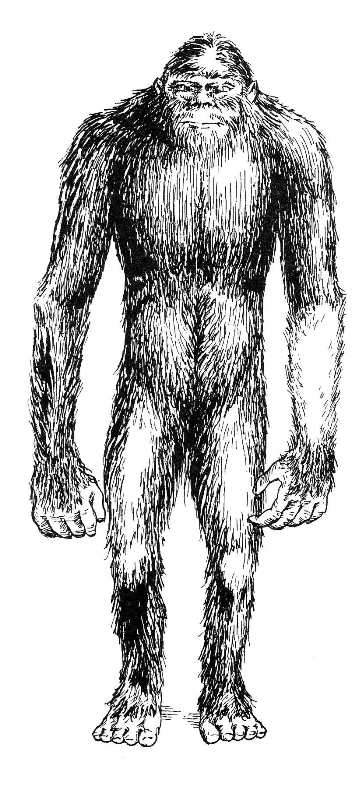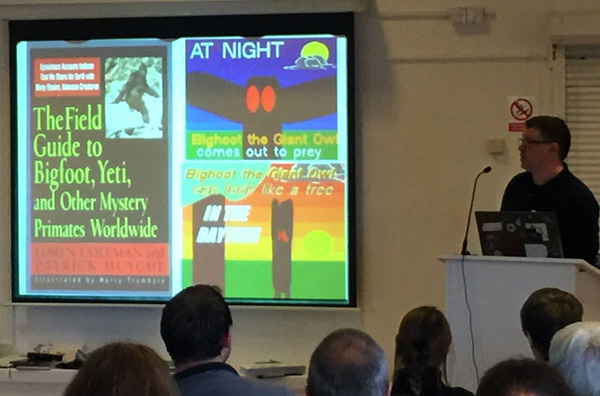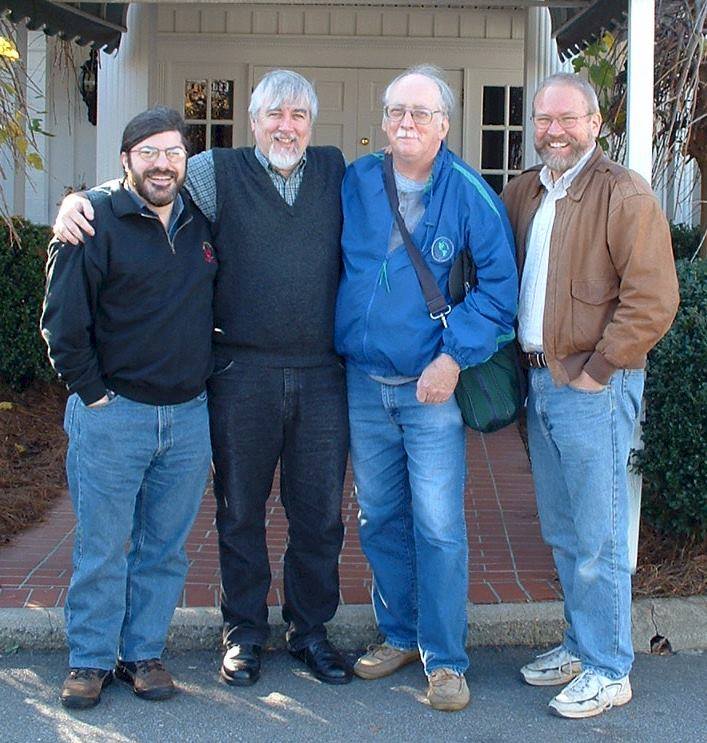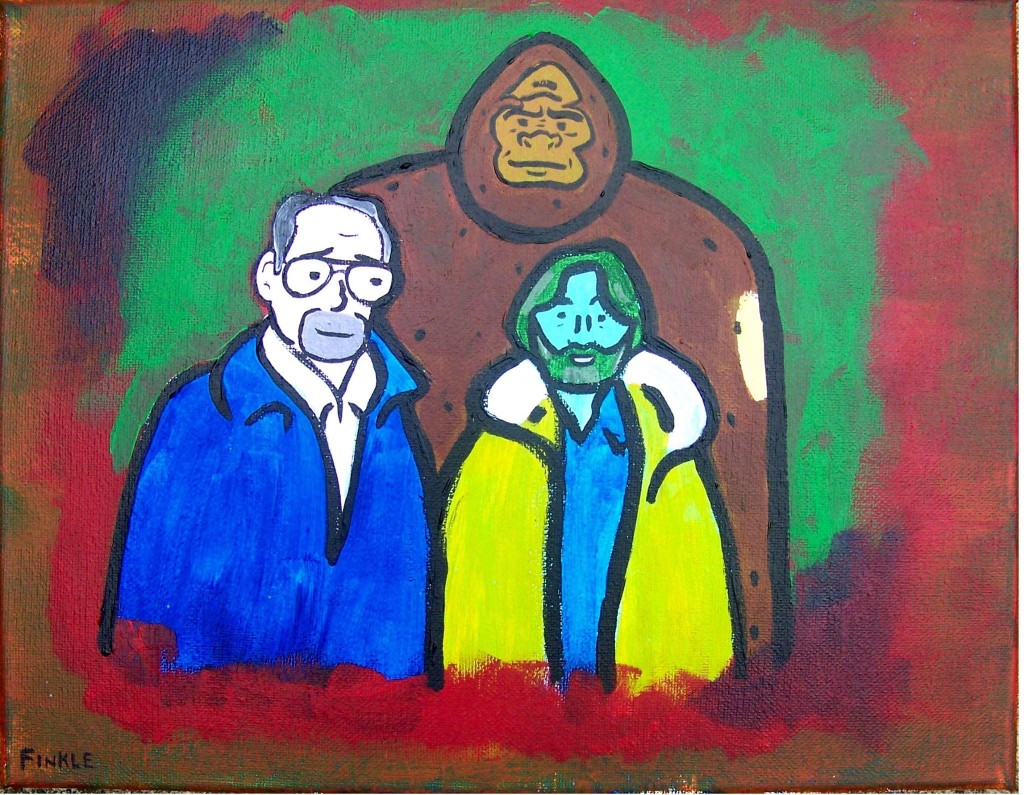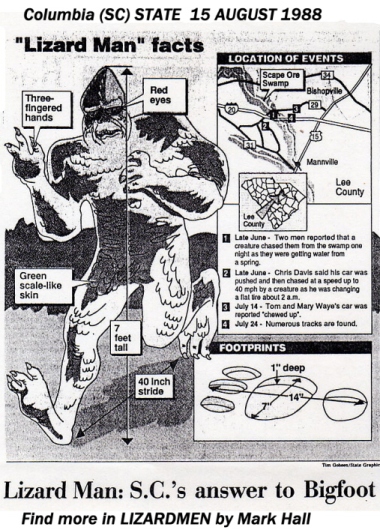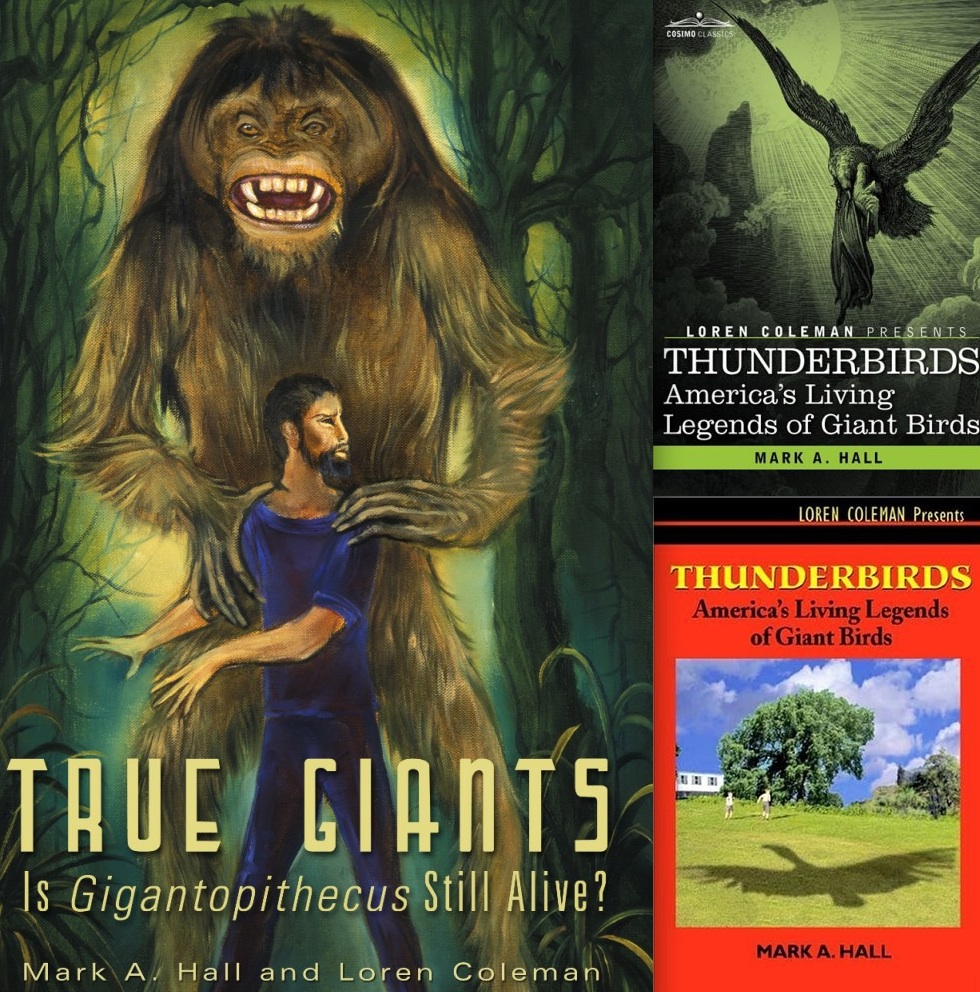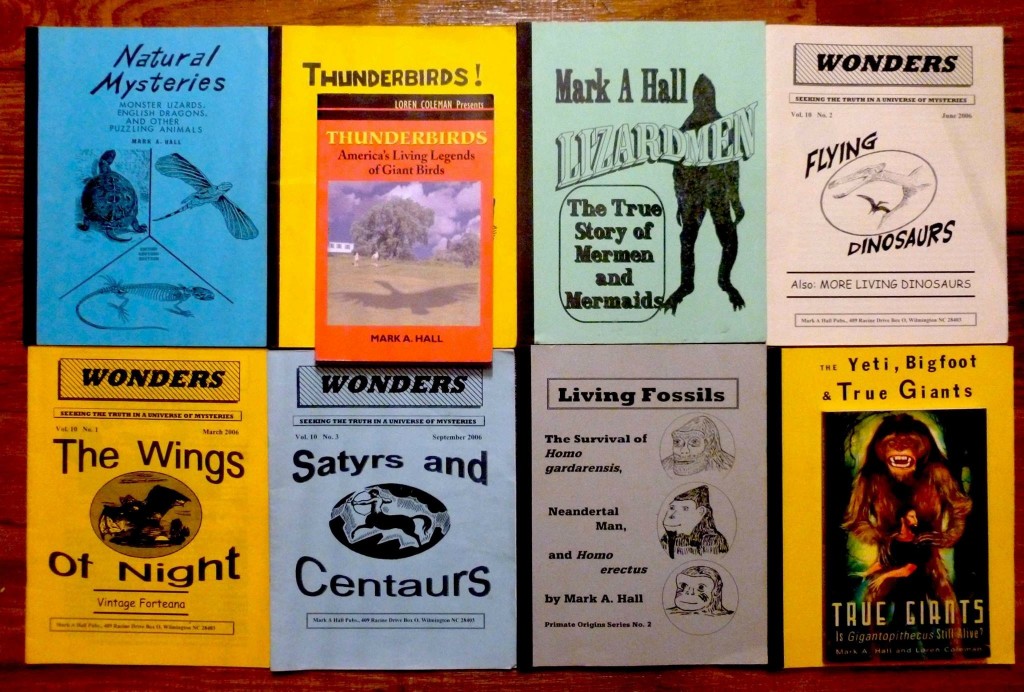(Historic) Mark A. Hall
My extremely close friend, colleague, co-author, and fellow Midwesterner, Mark A. Hall, died on the morning of Wednesday, September 28, 2016. He was such a quiet force in the foundation thinking taking place in cryptozoology, it may be years before the younger researchers realize what a loss this is. But for me, it is immediate and is a powerful punch to the gut.
Mark’s brother had passed away a few years ago, and then his brother’s widow, Shelia had become a lifeline for Mark in recent years. Shelia Hall was able to be with Mark last night, when he talked for over an hour to her, saying again that he was happy his research was in good hands with the International Cryptozoology Museum. She was able to be with him today, and shared that Mark passed away very peacefully.
Mark had been challenged by various forms of cancer for years, winning sometimes, and more recently, losing the battle despite conversations and communications that he was only suffering temporary set-backs. He clearly wanted to write more, think more, and discover more answers to the mysteries that interested him. I am overwhelmed with grief at the loss of such an important contemporary of mine.
Mark was born on June 14, 1946, in Minneapolis, Minnesota, and turned 70 years old on his last birthday.
It always seemed fitting that Hall entered the world on Flag Day, as he was interested in politics and how the nation should be run. A Fortean, cryptozoologist, author, and theorist, Hall was raised in the heartland of America, in or near Bloomington, Minnesota (except for one temporary trial attempt at living in North Carolina). Mark served in Army intelligence in West Berlin, in the midst of the Cold War, as a Russian linguist, translating messages gleamed from behind the Berlin Wall. Besides being an editor at an archeological society in Minnesota after his military service, Hall went on to work in human relations in various branches of the federal government, mostly for the Department of Agriculture and the Customs Service, while in his home state. He was an old-fashioned patriot who allowed himself to question the scientific establishment with every breath he took, and with each stroke of his computer keys.
Mark A. Hall was intrigued by nature’s anomalies for most of his life. For almost sixty years, he was actively pursuing historical records and eyewitness testimony concerning cryptozoological phenomena. He traveled extensively throughout the Americas – and the world.
I first corresponded with Mark when Ivan T. Sanderson introduced us through letters late in the 1960s. Mark was living in Minnesota, and I was living in Illinois. Before long, we would visit each other and engage in long conversations about unknown hominoids, cryptozoology, and our latest theories. On his first visit with me at my home in Decatur, Illinois, after my wife-at-the-time excused herself, Mark and I stayed up into the early morning hours talking and talking, and completely forgot about sleeping. I always found Mark one of the most intellectual thinkers in the field, and we fed off of the others’ ideas and the challenges to our thoughts, via visits, letters, and phone conversations, long before emails and the Internet.
Mark actively researched mystery cats, hairy hominoids, surviving anthropoids, ancient civilizations, and hundreds of other topics. He had extensive files and a large library. One concrete action he took before he died was to pass along over ten large boxes of his binders of original research materials to the International Cryptozoology Museum. He wanted his research to find a home where future generations could learn more from his work. I wished to help his archives to be part of his living legacy. His files arrived this month, days before today came.
Mark A. Hall was a Fortean, and wrote Fortean articles, for a time a column for Fortean Times. For years, he edited and published the journal Wonders, devoted mostly to cryptozoology and to other Forteana that interested him.
As a book author, some of his works, such as an early book on Thunderbirds, Natural Mysteries, The Yeti, Bigfoot & True Giants, and Living Fossils, were self-published. In recent years, he saw a couple of his books more formally published. They cover unique subjects, such as Thunderbirds: America’s Living Legends of Giant Birds (now a rare paperback book, more available in hardcover). Mark always had other books waiting in the wings.
The cover of Mark A. Hall’s 2004 book, Thunderbirds: America’s Living Legends of Giant Birds.
As a bold theorist, Hall wrote that North America is home not only to the Bigfoot of the Patterson-Gimlin footage, but also to drastically different primates such as the True Giant (probably Gigantopithecus, he thought) and the Taller-hominid (which he saw as survivors of the recorded fossil known as Homo gardarensis).
These theories resulted in my assisting him finish his important work, True Giants: Is Gigantopithecus Still Alive? in 2010.
Hall and I, on behalf of Ivan T. Sanderson, kept track of the Minnesota Iceman throughout the Midwest, in 1968-1969, and I interviewed Mark about his involvement with the Minnesota Iceman for my just-completed “Afterword” in Neanderthal: The Strange Saga of the Minnesota Iceman (Anomalist Books, 2016).
Mark also appeared on Unsolved Mysteries detailing his Minnesota Iceman entanglement. The case was featured as a part of the September 25, 1994 episode of Unsolved Mysteries on NBC, and then in repeats on the Lifetime Channel for decades.
Hall served as the director of the Sanderson-founded Society for the Investigation of the Unexplained (SITU) in the early 1970s, right before Sanderson’s death in 1973.
Besides Mark’s theories that challenged many even within cryptozoology, he had an incredible memory for details, and his insights always impressed me. In 1999, I coined the name “Marked Hominids” to honor Mark A. Hall. He had invented the concept of the “Taller-hominid,” which was not well-understood within the field. I renamed Mark’s “Taller-hominids” with the term “Marked Hominids,” to describe these specific type of Bigfoot-like creatures seen from Siberia to the Eastern USA and elsewhere, who are often noted as aggressive, piebald (“marked”), and not actually the Neo-Giants, the Bigfoot/Sasquatch so well-known from the Pacific Northwest. The fact Mark had first described them as separate from Bigfoot seemed a natural to thus be christened “Marked Hominids.”
Darren Naish takes on Mark’s Bighoot theory and some of mine, in what Naish called “speculative creature building” a la’ Ivan T. Sanderson, at TetZooCon 2015. Even in ridicule, a few people listened to Mark’s thoughts. Mark felt, in time, his theories would make sense, based on future discoveries. Hall was not evangelical about his material, and thought the data could speak for itself, eventually.
Tim E. Cassidy, Loren Coleman, Mark A. Hall, and Dallas Tanner all spoke at a South Carolina cryptozoology conference organized and held by Tanner in 2003. (Dallas Tanner/Tim Cassidy photo.)
Other than Mark’s Unsolved Mysteries appearance and the 2005 conference appearance, Mark tended to avoid public appearances and the media. However, he did do a few overnight radio interviews.
Mark A. Hall, a Marked Hominid, and Loren Coleman. Painting by Andy Finkle.
Mark A. Hall and I appeared together on Coast to Coast A.M. with George Noory about “Mothman & Thunderbirds,” on Tuesday, November 15, 2005. I presented an overview of the Mothman case, and we talked of how the creature has similarities to a giant owl, and may have used air turbulence from cars to facilitate its flight. Mark joined the show to share material on Thunderbirds, which reportedly have a wingspan of 18 to 20 ft– twice the size of any known birds. Hall recounted the 1977 Lawndale, Illinois case, where a young boy was picked up and carried briefly by one of the giant birds. Though unharmed, the boy’s hair turned gray after the incident. Hall said there were similar instances in the 1800s.
Mark Hall did appear alone, with Ian Punnett, on Coast to Coast A.M., on June 30, 2006, on the show “Giant Owls & Thunderbirds.” Hall talked about reported sightings of giant owls and other mysterious behemothic birds. Hall said American Indian legends, as well as modern accounts speak about such birds, particulary in the West Virginian Appalachian Mountains. Some of these “great owls” are reportedly man-sized with 10-ft wingspans, Hall explained, and were probably the inspiration behind the Mothman stories of the 1960s. Hall coined the term “Bighoot” to describe the true origins of the Mothman sightings, which he related to giant owls.
Then George Noory invited him back on July 20, 2006, to talk about Thunderbirds and other mysterious creatures. One cryptid Hall discussed was the “Lizardman”– a 7 ft. tall scaly creature that was reportedly seen in South Carolina in 1988. Hall related the Lizardman to folkloric tales of mermen and mermaids, who were said to inhabit the water yet be able to remove their fish parts like scuba gear when they came on land and sometimes mated with humans. On the topic of unknown hominids, in the Yukon Territory and Alaska, Hall talked of what he felt were modern day reports of Neanderthals seen wearing crude clothing and carrying axes.
Hall proposed a new technique and coined the name for a modern form of studying cryptids, which he termed “telebiology,” years ago. He formalized his thoughts about the concept, in print, almost two decades ago. Speaking of his suggested method, specifically to study unknown primates, Hall wrote:
With temporary captives, we should do the best we can with them and then set them free. The results will be genuine knowledge in the records we will then have, and we will have invested in the future of a new relationship with our primate relatives. This approach is part of what I have called ‘telebiology,’ a means by which we can begin to study the cryptids that have been the object of cryptozoology. If we make the effort to study animals at a distance, using our brains and technology, we can succeed where others have failed in the past. If we can accept that starting to study a species with a dead animal can be difficult, then we can put that goal at the end of the process instead of making it a requirement to do anything at all. ~ Mark A. Hall, from The Yeti, Bigfoot & True Giants, 1997: 110.
Lizard Man
From 1992, for almost a decade, Mark published a journal called WONDERS that covered many mysteries in the fields of cryptozoology, anthropology, and the uncharted world of forteana.
The essence of Hall’s earlier, now unavailable self-published Lizardmen serves as the foundation for a book-in-the-works that I hope some someday will be published, Merbeings: The True History of Mermaids and Lizardmen by Mark A. Hall, from the International Cryptozoology Museum. Mark became one of the first honorary members of the International Cryptozoology Society earlier in 2016.
Thanks for hanging in there so long, Mark, and for sharing so much with all your friends, family, and other folks down through the years.
I will miss him, deeply. This world is much less interesting without Mark A. Hall.
+++++++++++++++++++++++++++++++++++++++++++++++++++++++++++++++++++++++++++++++++++++++++++++++
The Star-Tribune published the following family-generated notice about Mark (with a flag, showing he was a veteran):
Hall, Mark A. Age 70, of Mpls., MN, passed away Sept. 28, 2016 after a long illness. He is preceded in death by his parents, Carl W. and Shirley M.; and brother, Stephen. Survived by brother, Gregory and sister-in-law, Barbara Hall of Cleveland, Ohio. Also survived by sister-in-law, Sheila Hall; and 5 nephews, Marc, Peter, Ryan, Sean, and Colin Hall. A private memorial service will be held at a later date.
Ken Gerhard posted the following montage on Facebook in tribute to Mark.
by Loren Coleman on September 28, 2016
